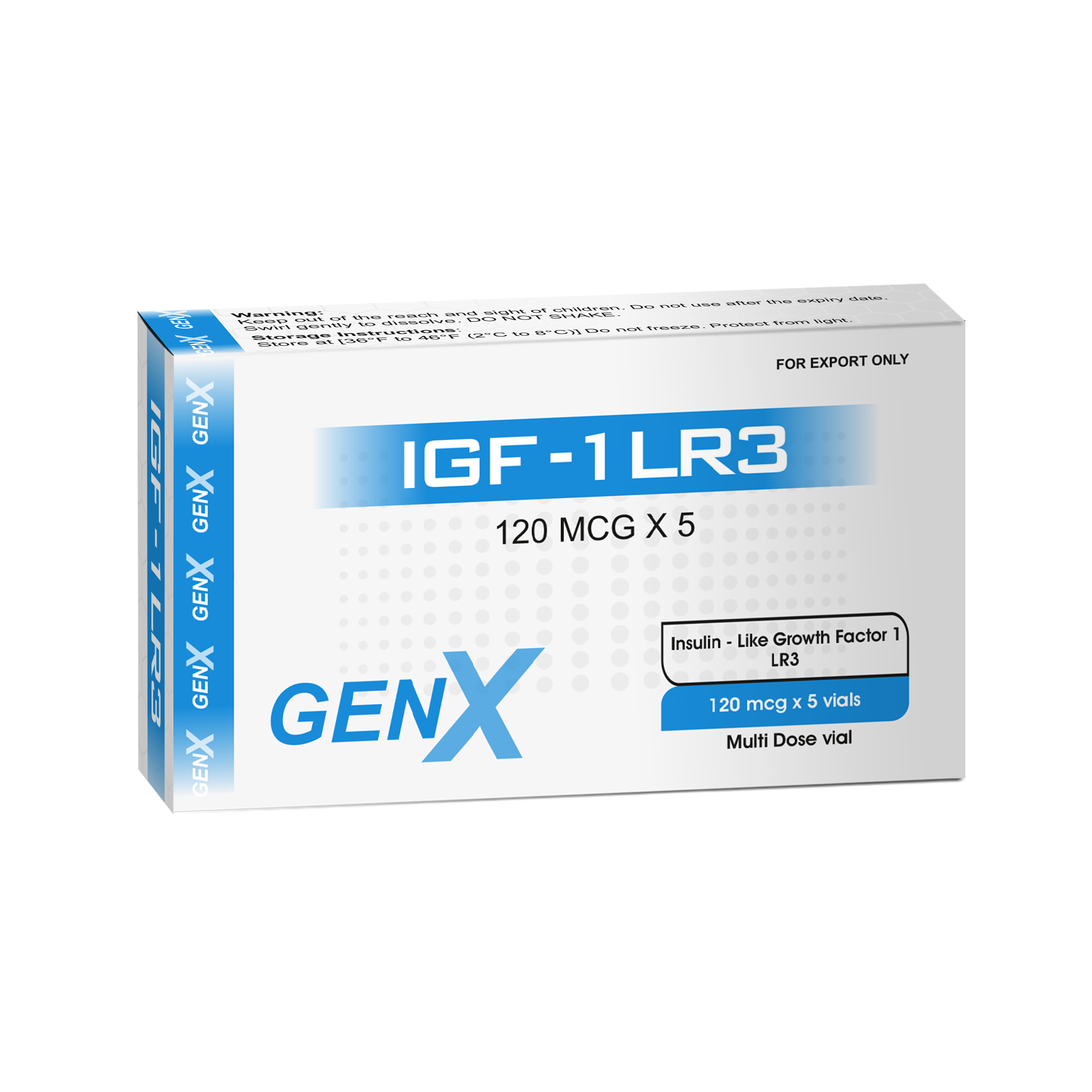PEG MGF
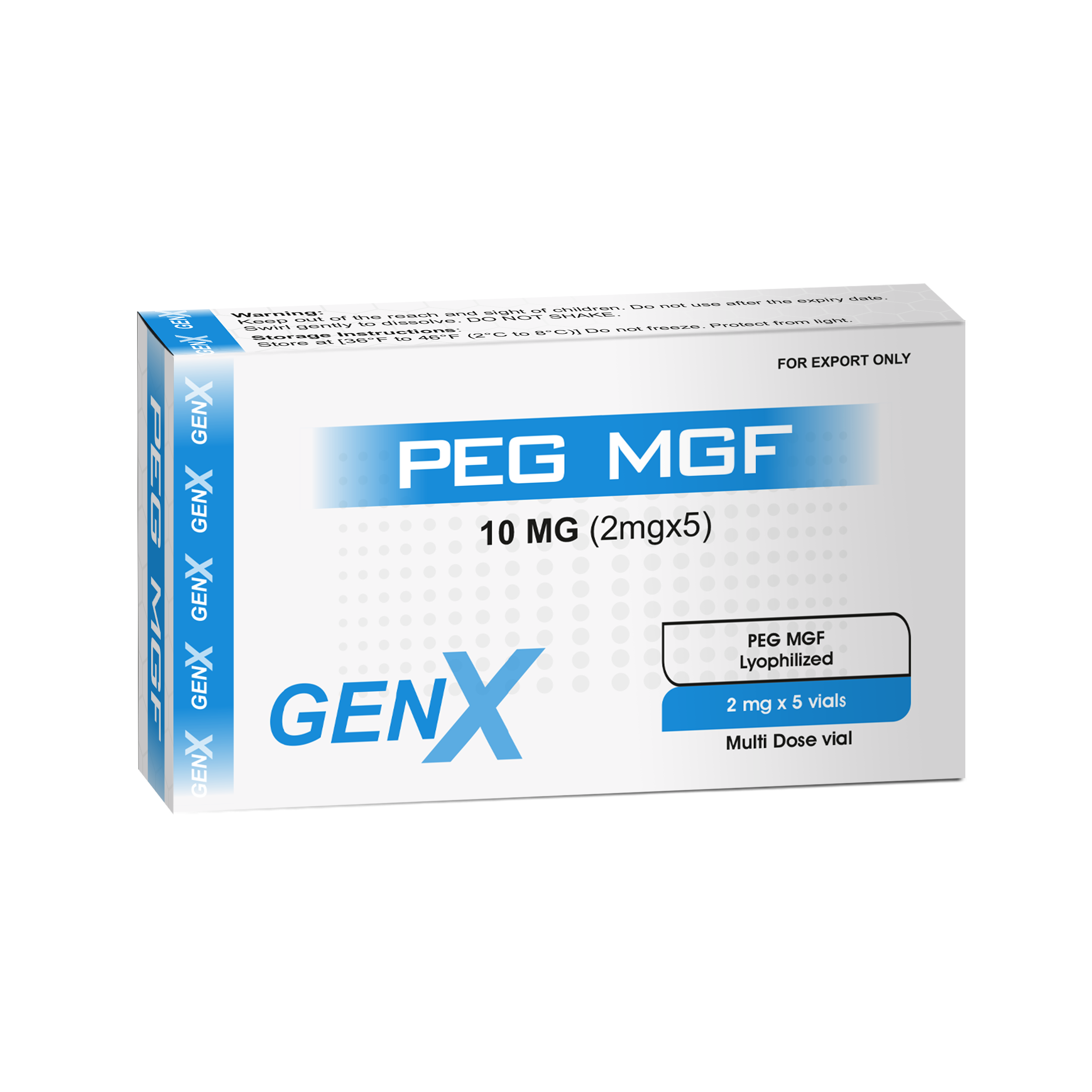
PEG-MGF (Pegylated Mechano Growth Factor) is a synthetic, long-acting version of MGF—a splice variant of IGF-1—engineered to help with muscle growth, repair, and recovery, especially after physical stress or injury.
- What Is PEG-MGF?
- MGF (Mechano Growth Factor) is a natural variant of IGF-1, expressed locally in muscle tissue in response to mechanical overload (e.g., intense exercise)
- PEG-MGF is chemically modified by attaching a PEG (polyethylene glycol) chain, which:
- Extends its half-life from minutes to days
- Allows for systemic use (instead of just local effects)
- Dosing in Research:
- 200–400 mcg, 2–3 times per week.
- Usually subcutaneous or intramuscular injection
- Best timing: post-workout, ideally into trained muscle (but systemic effect is fine due to PEGylation)
- Cycle length: 4–6 weeks
CJC DAC-1295
CJC-1295 with DAC is a long-acting growth hormone-releasing hormone (GHRH) analog designed to stimulate natural growth hormone (GH) release over an extended period—up to a week per dose.
- What is CJC-1295 with DAC?
- DAC = Drug Affinity Complex, which significantly extends the peptide’s half-life to ~5–8 days.
- Unlike CJC-1295 without DAC (Mod GRF 1-29), which mimics pulsatile GH release, CJC with DAC causes sustained GH elevation
- It binds to albumin in the blood, allowing for weekly or twice-weekly dosing
- Dosing in Research:
- 1–2 mg per injection, 1–2x per week
- Subcutaneous or intramuscular injection
- Because of its long action, daily dosing is not required
- Can be used alone or with occasional GHRP/IPAM dosing to amplify pulses

IGF-1 DES
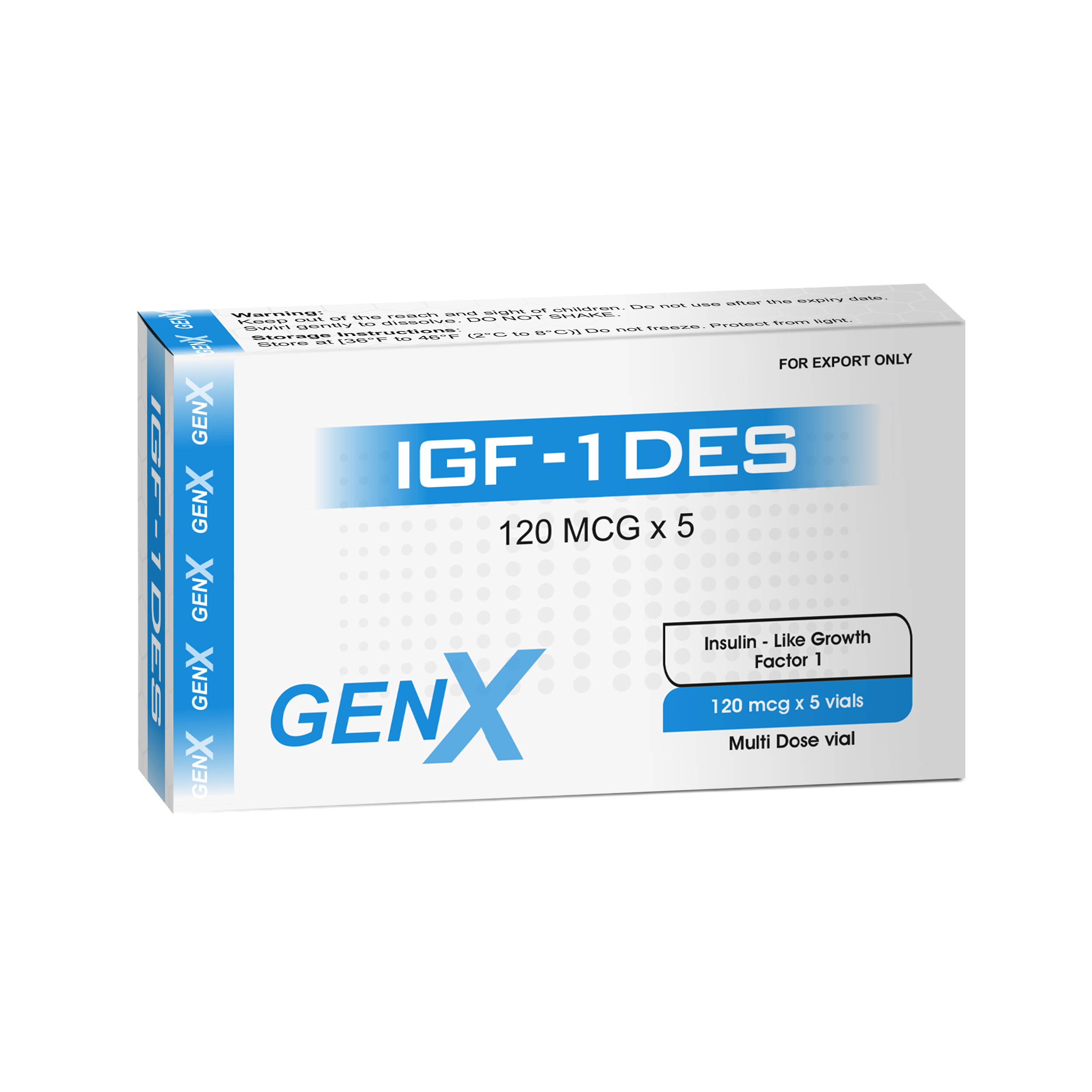
IGF-1 DES (1-3) is a modified version of the Insulin-like Growth Factor 1 (IGF-1) protein, designed to be more potent and have different biological effects. Here’s a breakdown:
- What is IGF-1 DES (1-3)?
- GF-1 DES (1-3) is a truncated version of IGF-1, where the first three amino acids of the full IGF-1 peptide are removed
- The “DES” stands for “des(1-3)”—indicating the deletion.
- This modification prevents it from binding to IGF-binding proteins (IGFBPs), which normally regulate IGF-1 activity
- As a result, IGF-1 DES is up to 10x more potent than regular IGF-1 in stimulating muscle growth and cellular repair.
- Key Properties:
- Half-life: Much shorter than regular IGF-1 (minutes vs. hours), making its effects more localized
- Function: Promotes muscle hyperplasia (increase in number of muscle cells), not just hypertrophy (growth of existing cells)
- Usage: Commonly researched for muscle repair, neuroprotection, and tissue regeneration. Often studied in bodybuilding contexts, although it’s not approved for such use.
CJC+GHRP-6
CJC-1295 + GHRP-6 is a well-known peptide combination used in research for stimulating growth hormone (GH) release. When used together, they have a synergistic effect—amplifying GH pulses far more than either alone.
- Breakdown of Each:
- A GHRH (Growth Hormone Releasing Hormone) analog.
- Stimulates the pituitary to release GH of two types:
- CJC-1295 DAC (long half-life: 1–2 weeks)
- CJC-1295 w/o DAC aka Mod GRF 1-29 (shorter half-life: ~30 minutes)
- Mod GRF 1-29 is commonly paired with GHRPs for pulsed GH release.
- 2. GHRP-6 (Growth Hormone Releasing Peptide-6)
- A Ghrelin mimetic that also stimulates GH release but via a different receptor.
- Promotes hunger and can raise cortisol and prolactin slightly.
- Effective in synergy with CJC-1295.
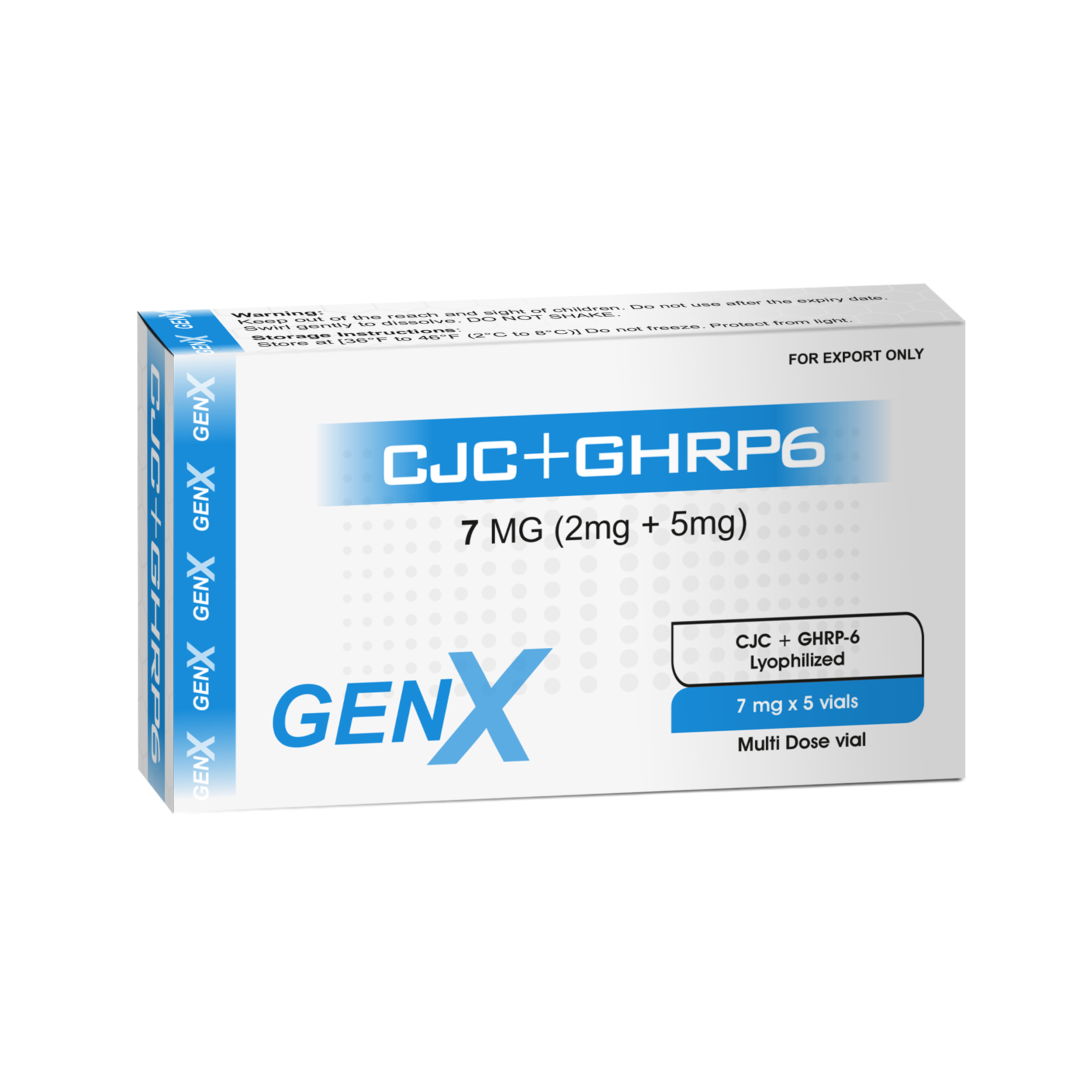
HGH
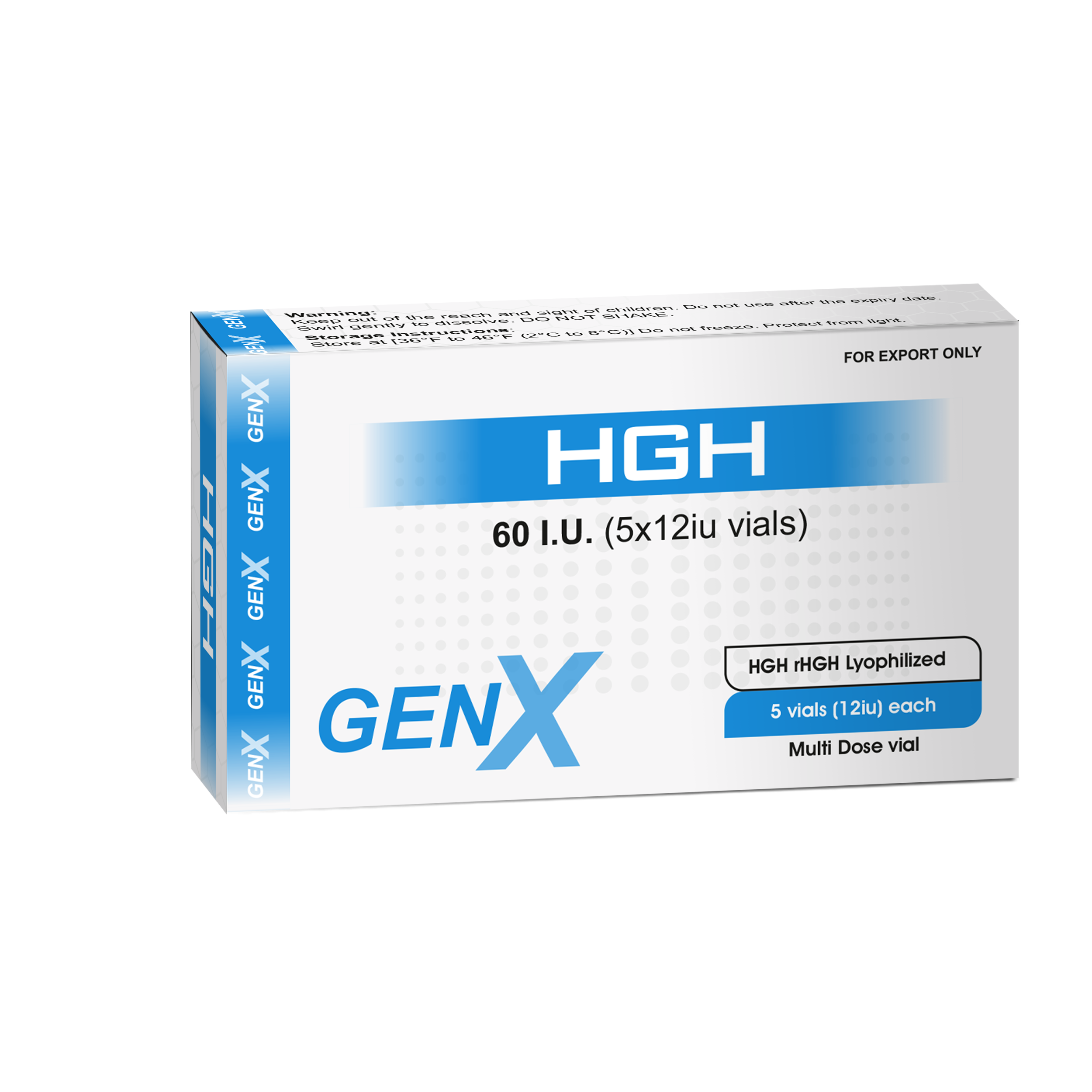
Somatropin is the pharmaceutical (recombinant) form of human growth hormone (HGH)—a 191-amino acid protein identical to the GH your pituitary gland naturally produces.
- What is Somatropin:
- A synthetic HGH made using recombinant DNA technology
- Bio-identical to endogenous GH
- Used medically to treat GH deficiency, growth failure, muscle wasting (e.g., in HIV/AIDS), and sometimes anti-aging or performance-enhancing in non-medical contexts.
-
How It Works:
- Stimulates IGF-1 production in the liver, which promotes
- Muscle growth
- Fat metabolism (lipolysis)
- Cell regeneration
- Bone density improvements
- Recovery and healing
FRAG(10MG)
HGH Fragment 176-191 is a modified version of human growth hormone (HGH) that specifically targets fat loss without many of the effects associated with full-length HGH.
- What is HGH Fragment 176-191?
- It is a synthetic peptide derived from the C-terminal end (amino acids 176 to 191) of the human growth hormone molecule.
- This fragment represents only ~10% of the full 191-amino-acid HGH, but it retains the fat-burning properties
- It does not cause the typical HGH side effects such as insulin resistance, water retention, or increased IGF-1 levels
- Dosing (for research purposes only):
- Typical research dosing: 250–500 mcg per day, often split into 2 doses (morning + pre-bed).
- Best administered subcutaneously on an empty stomach.
- Often studied in cycles of 4–12 weeks.
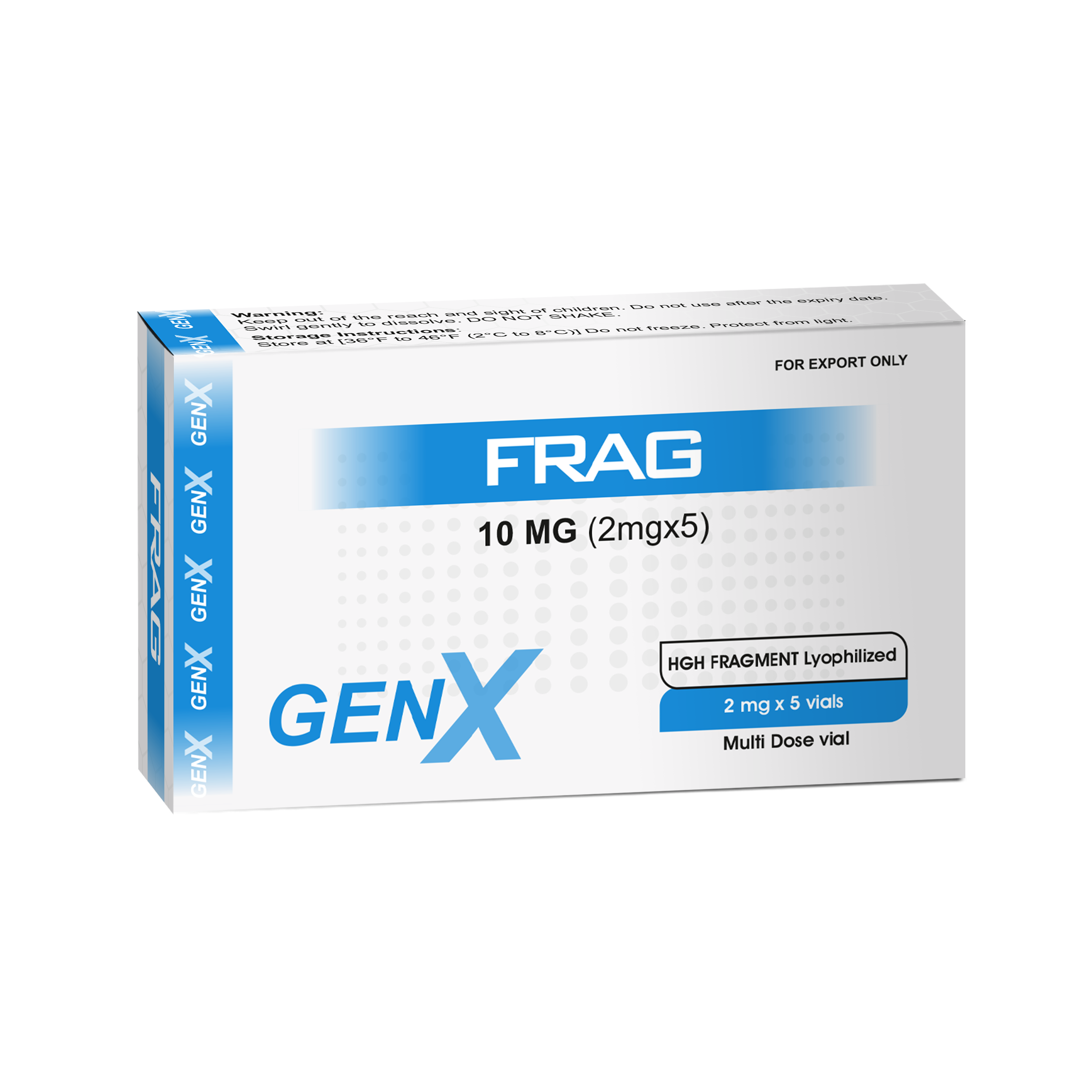
FRAG+(20MG)
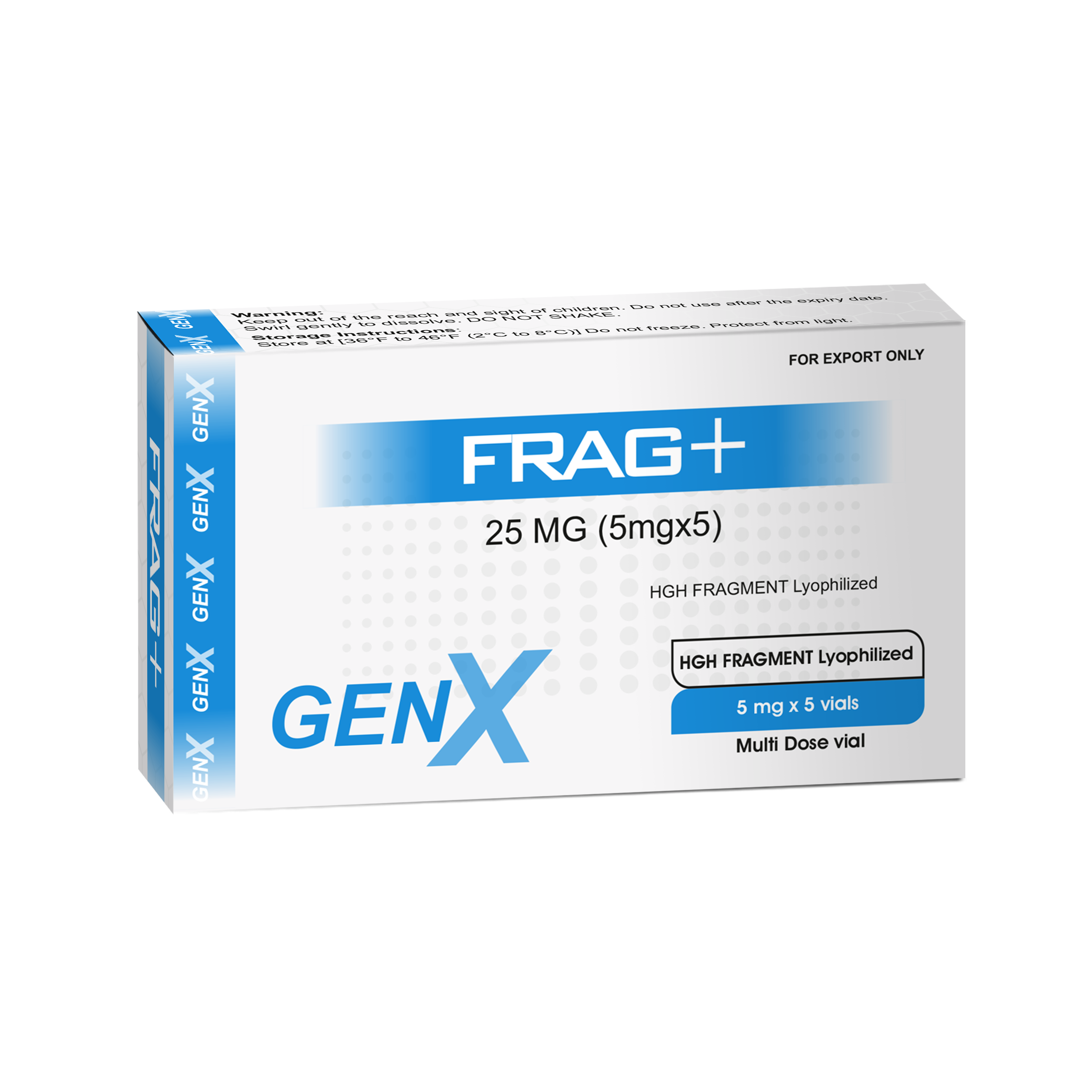
HGH Fragment 176-191 is a modified version of human growth hormone (HGH) that specifically targets fat loss without many of the effects associated with full-length HGH.
- What is HGH Fragment 176-191?
- It is a synthetic peptide derived from the C-terminal end (amino acids 176 to 191) of the human growth hormone molecule.
- This fragment represents only ~10% of the full 191-amino-acid HGH, but it retains the fat-burning properties
- It does not cause the typical HGH side effects such as insulin resistance, water retention, or increased IGF-1 levels
- Dosing (for research purposes only):
- Typical research dosing: 250–500 mcg per day, often split into 2 doses (morning + pre-bed).
- Best administered subcutaneously on an empty stomach.
- Often studied in cycles of 4–12 weeks.
GHRP-6
GHRP-6 (Growth Hormone Releasing Peptide-6) is a synthetic peptide used in research to stimulate growth hormone (GH) release by mimicking ghrelin, the “hunger hormone.”
- Key Features of GHRP-6:
- Mechanism of Action:
- Binds to the ghrelin receptor (GHS-R) in the pituitary and hypothalamus
- Stimulates a natural GH pulse
- Can be combined with GHRH analogs like CJC-1295 (Mod GRF 1-29) for a synergistic GH release
- Unique Characteristics:
- Increases appetite—a lot. This is due to its ghrelin-mimicking action
- Stimulates prolactin and cortisol slightly at higher doses
- Very short half-life: ~30 minutes, so timing matters
- Research Benefits:
- Increased GH and IGF-1 levels
- Promotes muscle growth, fat loss, improved sleep, recovery, and healing
- May support joint repair and anti-aging effects
- Typical Research Dosing:
- 100–300 mcg per dose, 2–3x daily
- Must be taken away from carbs and fats, which blunt GH release
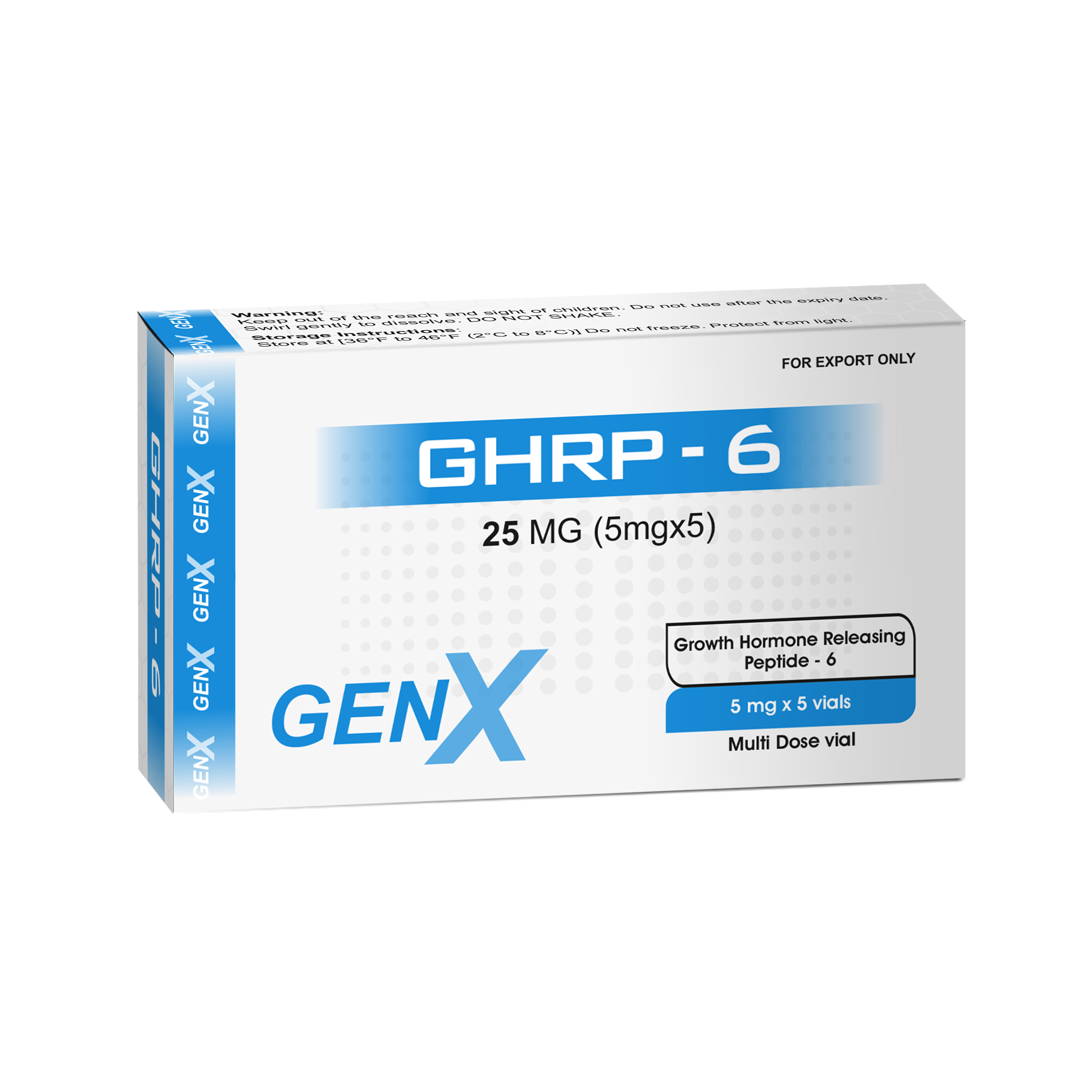
GHRP-2
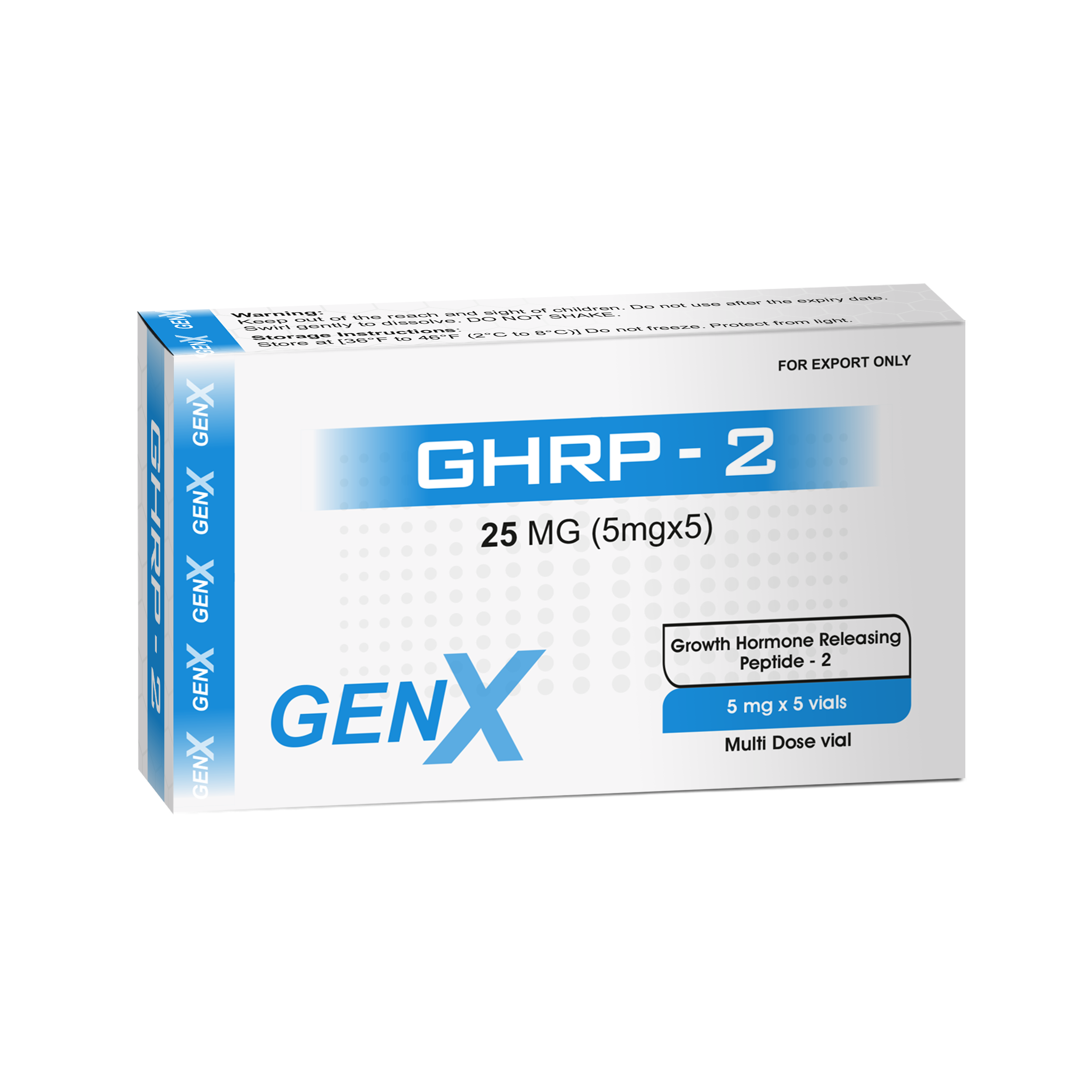
GHRP-2 (Growth Hormone Releasing Peptide-2) is a synthetic peptide in the GHRP family, similar to GHRP-6, designed to stimulate growth hormone (GH) release via the ghrelin receptor.
- Mechanism:
- GHRP-2 binds to the GHS-R1a receptor, mimicking ghrelin, and triggers natural GH pulses
- Works best when paired with a GHRH analog like Mod GRF 1-29 (CJC-1295 without DAC) for enhanced GH secretion.
- Research Benefits:
- Promotes:
- Muscle growth
- Improved recovery and sleep
- Joint and tissue healing
- Slight hunger stimulation (less than GHRP-6)
- Typical Research Dosing:
- 100–300 mcg per injection, 2–3x daily
- Avoid carbs/fats for 30–60 mins before/after to maximize GH pulse
IGF-1 LR3
IGF-1 LR3 (Long R3 Insulin-like Growth Factor-1) is a synthetic, extended version of IGF-1 designed for greater potency and duration in the body. It is commonly used in research focused on muscle growth, cell regeneration, and anti-aging.
- What Is IGF-1 LR3?
- IGF-1 stands for Insulin-like Growth Factor 1, a hormone similar in structure to insulin
- It is the primary mediator of growth hormone’s anabolic effects, promoting muscle repair, cell growth, and fat metabolism
- LR3 means: Long: It has an extended half-life (~20–30 hours vs. ~30 minutes for native IGF-1)
- R3: The third amino acid is replaced with arginine, which prevents binding to IGF-binding proteins (IGFBPs) that normally inhibit its activity
- This makes IGF-1 LR3 ~2–3 times more potent than native IGF-1
- Typical Research Dosing:
- 20–100 mcg/day, often in a single daily subcutaneous injection● Sometimes site-injected into muscles post-workout to localize effects (though systemic effects still dominate)
- Cycle length: 4–6 weeks is common in research settings
